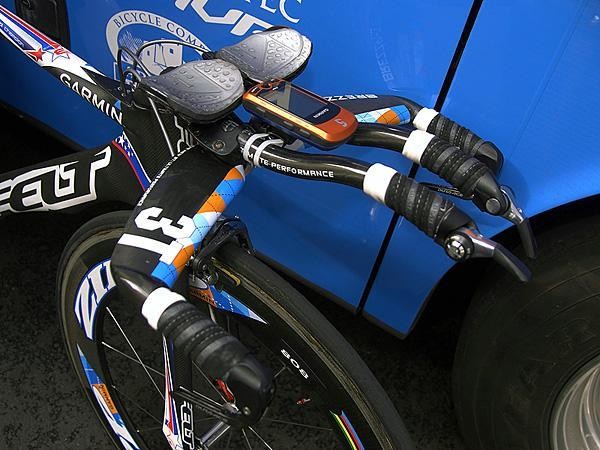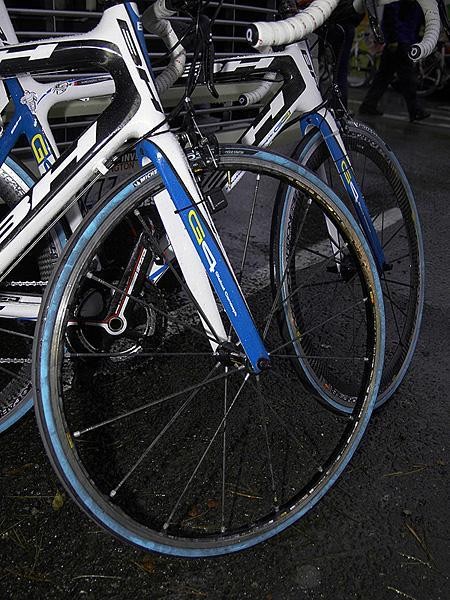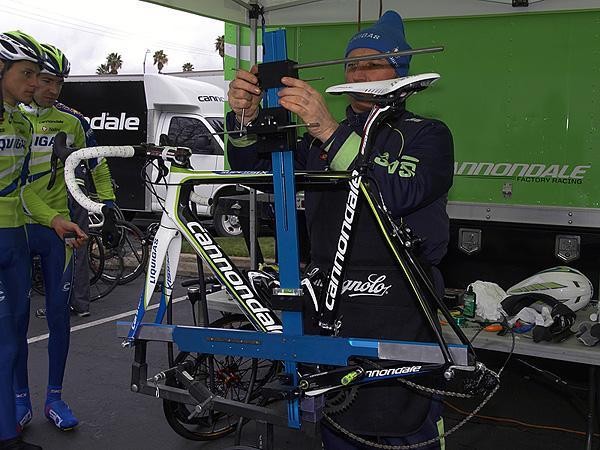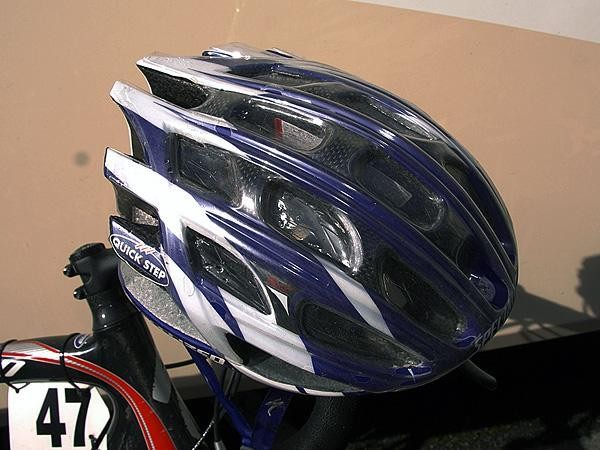A possible disaster on the horizon
Team management and mechanics were awash in panic after rumours swirled that the UCI would be...




Race tech: Tour of California, February 17, 2009
Is that 8 x 2.5cm or 3:1? Confusion surrounding obscure UCI rule has teams in panic
Team management and mechanics were awash in panic after rumours swirled that the UCI would be rigidly enforcing a new technical rule at this Friday’s time trial in Solvang - not beginning in 2010, as many had apparently assumed.
UCI technical ruling 1.3.024 - which was just modified on 1 Jan 2009 - states that, "A fuselage form shall be defined as an extension or streamlining of a section. This shall be tolerated as long as the ratio between the length (L) and the diameter (D) does not exceed 3."
Previously the rules stated only that cross-sections of any particular frame or component had to fit within an 8 x 2.5cm rectangle. By that definition, all of the equipment currently planned for use on Friday is legal. However, if the 3-to-1 rule is applied, nearly every team currently listed on the Tour of California roster is headed for disaster unless some sort of contingency plan is put into effect.
Among the equipment violations would be virtually every aero handlebar currently in use (with one notable exception being Bontrager), many aero seatposts, some wheels and possibly even some frames.
The potential penalties for violating the ruling are undoubtedly severe: either the rider would simply not be allowed to start with the equipment in question, or the rule could be retroactively applied and the applicable performance could be disqualified.
Get The Leadout Newsletter
The latest race content, interviews, features, reviews and expert buying guides, direct to your inbox!
Alternate options discussed by various teams range from incredibly inconvenient to downright impossible: scores of aero handlebars would have to be both obtained and installed prior to Friday or riders would be forced to use their road bikes on the decisive stage.
On a more general note, the ruling could also threaten the very existence of a number of aero equipment manufacturers including Oval Concepts, Vision and 3T. Stay tuned for additional information.
New R-SYS wheels for Ag2r
Mavic has acted quickly for its sponsored teams to the unfortunate R-SYS wheel recall it announced just a few weeks ago. Ag2r riders were already equipped with updated versions prior to the start of stage two and new wheels for OUCH team members were slated to arrive at the team hotel as they arrived in Santa Cruz.
According to Mavic marketing director Sean Sullivan, changes are limited solely to the tubular carbon spokes which now use both unidirectional and multidirectional layers - the original ones were unidirectional only - plus "other enhancements" in an effort to increase impact strength and overall durability.
Visual changes are still rather subtle though, and include a slightly different surface sheen. However, Mavic has added three silver circumferential stripes to the rim end of each spoke for easier identification. Total weight is essentially unchanged.
Liquigas’ bike measuring jig
The 2009 Tour of California has barely gotten underway yet Ivan Basso (Liquigas) is already prepping for some testing in the San Diego Low Speed Wind Tunnel. Team mechanics were seen replicating Basso’s time trial position on a standard road frame for the purpose a day prior to the prologue but what they were using to set it up was perhaps even more interesting.
While other teams rely on felt-tipped markers, bubble levels, measuring tapes and plumb bobs, the Liquigas wrenches cracked out an impressively thorough-looking jig that provides accurate - and more importantly, repeatable - figures for critical measurements such as saddle and bar positions.
A large horizontal beam resting on dummy front and rear axles ensures a relative level while the base of a vertical beam is anchored at the bottom bracket spindle to provide a zero point for all subsequent measurements. Sliding rods up top at either end of the bike are used to gage saddle and handlebar positions and a Cartesian (i.e. x-y) coordinate system makes for easier translation of numbers.
Though the initial design and construction of the jig assuredly required a significant initial investment in both time and money, the time saved by the mechanics in using it and the presumably more reliable numbers it produces likely makes it well worth the while.
Clever helmet covers for Quick Step
Stage 2’s nasty conditions found some Quick Step riders donning a special team-only addition to their S-Works helmets: a snap-on clear polycarbonate cover that obscures most of the upper and forward-facing vents. First seen on the helmets of Specialized mountain bike team riders Lene Byberg and Liam Killeen during last year’s World Cup, the handy caps have apparently now found favour with their road counterparts as well.
Specialized seemingly had little intention of producing the covers for consumer use back then but seems to have softened its stance now. "They’re talking about [putting into production] but we’re not sure right now," said Specialized PR man Nic Sims.